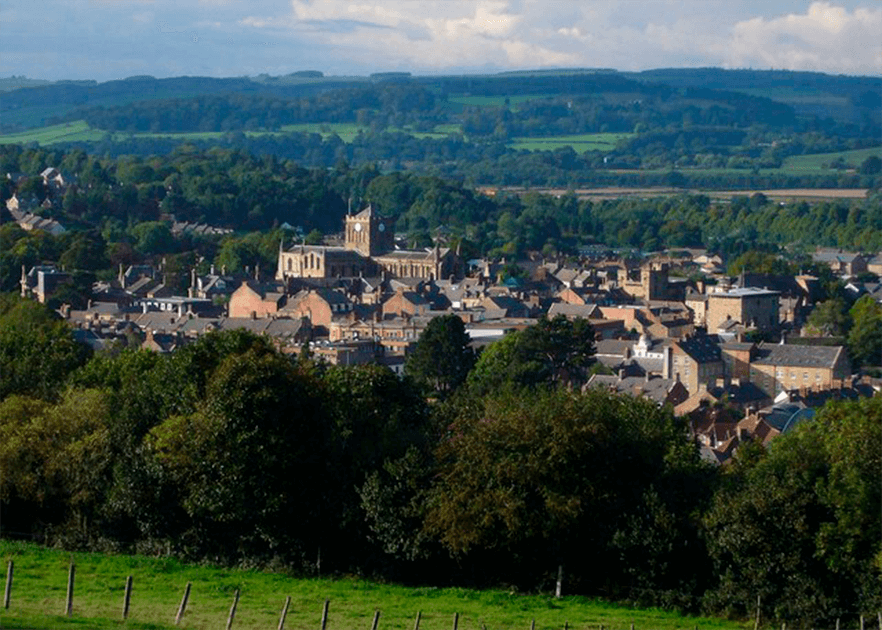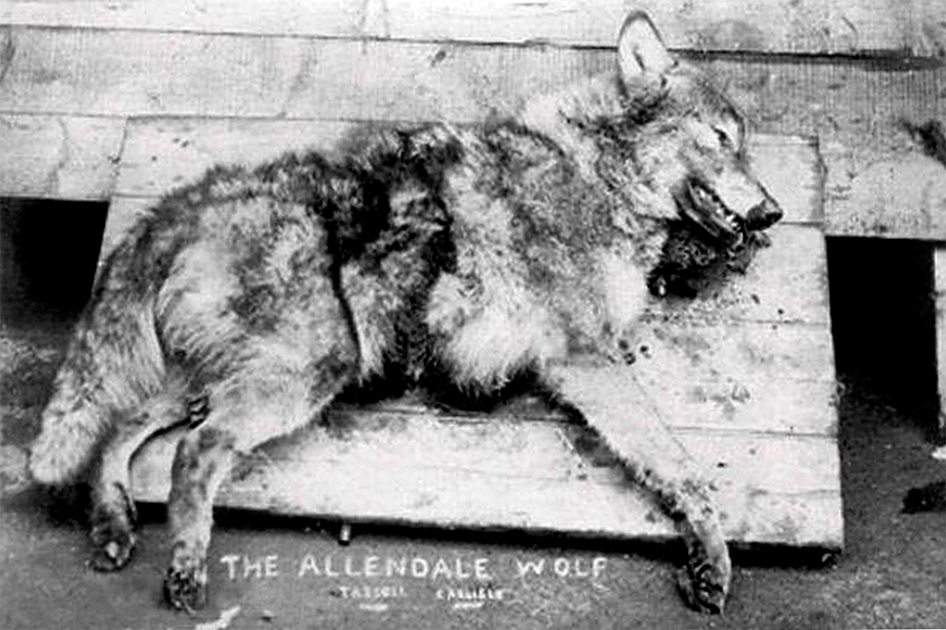
The Phantom Wolf & The Haunting of The Hexham Heads
The Hexham Heads seemed to be guarded by a terrifying phantom figure, described most frequently as half human and half wolf.
By: Bipin Dimri | Historic Mysteries
In 1971, the Robson family, who lived in Hexham, in the county of Northumberland in the far north of England, were driven away from their house due to some strange occurrences. These occurrences were reported to have begun for them only after they discovered two stone heads in their garden.
The Hexham heads were small, only about 6 cm (2 inches) in size. One of those heads was called, “the boy” due to the masculine shape of the skull, whereas the other was named “the girl” due to the presence of female features and long hair.
According to the family, the heads would move about by themselves. And that wasn’t all: the haunting of the Hexham heads had just begun.
Perhaps the most horrifying occurrence in the early days was witnessed by one of the family children. The front door to the family home opened itself as they passed, and outside was a terrifying half-sheep, half-human creature. A neighbour also saw the creature outside the front door, but by the time the family responded to the child’s screams, it had disappeared.
Buried & Cursed
The two young boys of the family were the ones who had discovered the stones, unearthed while they were digging the garden of their family house in Hexham, Northumberland. While they reached deep into the soil, they found two small stones shaped like skulls. They seemed like carved heads, which they brought to the house to show their parents.
The Hexham heads in truth only vaguely resembled skulls, being made out of stone and quite rudimentary in design. They were spherical and had little necks, which suggests that they were connected to something bigger at some point in time.
All of the people who examined these Hexham heads gave different descriptions, but they were sure they were palm-sized. These stones were no masterpiece art but were just basic approximations of a human face.
The discovery of these stones didn’t just bring curiosity but also a sign of terror. The Robson family started experiencing paranormal activities around the house. The heads were once seen moving by unseen hands, and the bottles around the house were thrown across the rooms.

These activities were not limited to the Robson family, as the kids in their house found the stones, but also linked to the neighbour’s house. Even the neighbours reported frightening experiences. Their young son got his hair pulled by some ghost.
After the discovery was made and the news reached the journalists and newspapers, specialists in neolithic art came to study the Hexham heads. Even the experts were facing difficulties in dating these stone heads. They were examined thoroughly multiple times, but the results were always different from the last report.
The heads were generally thought to be linked back to the Celtic tradition: they resembled other examples of Celtic heads of antiquity and other Celtic artefacts. Dr. Anne Ross, an expert on such art, took on the job of researching and analysing the Hexham heads.
But in taking on the heads she also exposed herself to the curse. Later she would outline in her reports that she saw a half-wolf, half-man figure walking around upstairs in her house. She said she followed the creature downstairs to the kitchen, after which it disappeared.
Shortly afterward, Dr. Ross’s daughter, Bernice, also experienced a similar apparition. She felt a cold figure standing behind her, most times while the stone was in her possession. Soon, it became clear to all who lived there that these Hexham stones had some supernatural influence on them. The stones were removed from the house, and the hauntings stopped.
However, nobody could have foreseen what happened next. A man named Desmond Craige came forward who claimed that he had made the stones. He said that in 1956, while he was living in the house that the Robson family occupied later, he made three of these stones for her daughter to play with.
The third of those stones were lost, while the two remained. He said he used local water, sand and stone to craft the faces.
But Craig’s claims were not just accepted right away: he was asked to replicate the methods. This he duly did, but his replicas were far cruder that what he claimed to have been created 16 years back. To add more complexity to the story, Professor Dearman, from the University of Newcastle, claimed that the Hexham heads were molded artificially, even though they were made from solid rock.
Several researchers have spent their time with the Hexham heads over several years. Finally, the heads fell into the possession of Southampton University and were then passed onto a psychic in the year 1978. After that, the stones were presumed lost, as there is no present record of the location or guardian of those stone heads.
What Theories Exist About Them?
As the heads were claimed earlier to have been descended from the Celtic traditions, it was presumed that the stones were cursed.
Following that, there was a theory that the stones were linked to Nordic mythology, specifically the monster known as a “Wulver”. This half human wolf man closely matched the descriptions offered by Dr Ross and her family. The Wulver in mythology was a powerful spirit but was benevolent towards all humans until they provoked him.

The townspeople of Hexham had what they thought to be good cause to fear the Wulver, however. In 1904 the town had suffered from attacks from a creature described as a wild wolf. Many at the time thought the creature supernatural, and of course the link was made between the 1970s sightings and this earlier monster.
The 1904 wolf was ultimately killed by a passing train while running away from the fields after killing livestock. Many people believed that the creature from the 1970s was the wolf who was more than a mere feral animal. The power of Hexham heads, they said, was helping the wolf to live again.
But, sadly, we have no opportunity today to study either the heads themselves or the effects they were said to have. After the stone heads were lost, the reports on such activities were also stopped.
Even though there is no proof of Hexham heads being linked to paranormal activities, and even a putative creator for the carvings, many believe they were something else. Could these crude faces have been haunted by a wolf man, and could that wolf man return?
* * *
READ MORE: The Very Weird Tale of Kojak & The Ghostly Driver
Read more on Unexplained Mysteries: Herne The Hunter: Hooded Forest God of Britain
Liked it? Take a second to support Collective Spark.
We’d love to hear from you! If you have a comment about this article or if you have a tip for a future Collective Spark Story please let us know below in the comment section.
